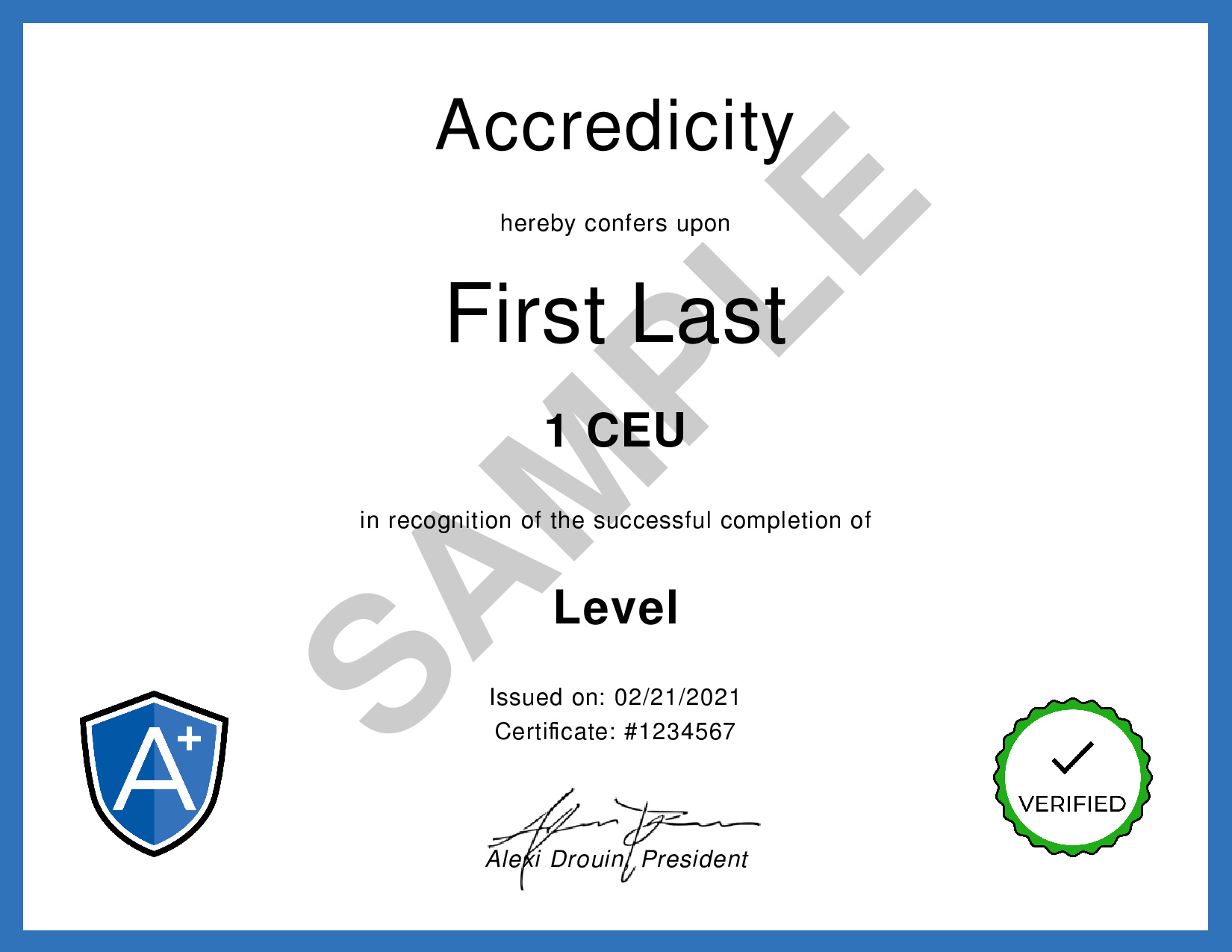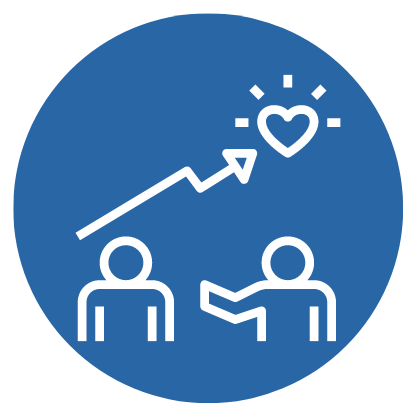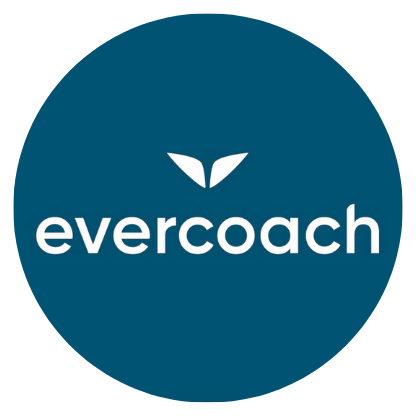Deep Coaching Techniques – A Live Session | Rich Litvin | Evercoach
Reference: Evercoach by Mindvalley. (2019, August 15). Deep Coaching Techniques In A Live Coaching Session | Rich Litvin [Video]. YouTube.
We Make Your Education Count

Get the Credit You Deserve and Become the Most Attractive Job Candidate by Earning and Posting A+ Badges to Your Linkedin Profile.
Sign Up to Get Started at Accredicity
|
Unlock your fullest potential with Rich Litvin - witness a live coaching session and learn powerful deep coaching techniques to become an even better coach. In this video, Rich Litvin, a masterful coach and Evercoach author, demonstrates his deep coaching techniques through a powerful live coaching session at Evercoach Summit 2016. Join Ajit Nawalkha as he breaks down the step-by-step process of a powerful coaching conversation, and learn how to identify what clients really need, help them see what they can't see, and give them space to imagine their future. Discover how to wiggle your way through the layers to uncover your clients' true needs and create the desired result. Learn industry best practices and trends for SEO optimized Wordpress post excerpts to maximize your coaching success. Learning Outline1. Identify what clients really need - Start the coaching conversation by understanding where the client is coming from and diving deep into what they really need. Instructional ContentAre you looking to become a better coach? Do you want to learn how to use deep coaching techniques in a live coaching session? If so, you've come to the right place. In this video, Master Coach and Evercoach author Rich Litvin demonstrates how to take a powerful real life coaching session step by step. Rich starts off by helping the client identify what they really need. This can be accomplished by understanding where your client is coming from and diving deep into what they really need, so you can best serve them. Rich suggests asking the client, “how can I serve you today?” The second pillar is to help your client see what they can’t see. This can be done by asking questions about their background and history to start identifying patterns that are being repeated in the client’s behavior. This can be a major turning point for the client as it will allow them to become aware of these unconscious mindsets and behaviors, which is the first step towards change and transformation. Another useful tool to help your clients see what they can’t see, is to give them the space to imagine their future. Rich has a very fun way to do this, and it goes something like this: “Three years have gone by, I pick up the phone. "Hi Rich it's Greg. It's been three years, remember we sat on stage together at that event, and I shared some stuff with you. Well, these three years have been amazing. My life has transformed business, personal life, professionally, everything's transformed." Leadership
|

In this video, Ajit Nawalkha talks about coaching techniques used by master coach and Evercoach author Rich Litvin. He explains that a powerful coaching session starts with identifying what the client really needs. The coach must ask questions and peel back the layers of the onion to get to the bottom of things. They must also help the client see what they can't, by uncovering patterns in their behavior and giving them the space to imagine their future. He uses fun and informal language like metaphors, analogies, and synonyms to make it easier to understand. Video Quotes1. "What are some of your go-to opening questions that stick? Share with me in the comment section below." - Rich Litvin 2. "Know yourself and you will win all battles." - Rich Litvin 3. "How can I serve you today?" - Rich Litvin Related Quotes"We're not just trying to fix a problem — we're going for something bigger." - Rich Litvin Competencies1. Coaching Learning Outcomes1. Recall: Identify the key question Rich Litvin used to uncover the client's needs. Sample AnswersI learned that in order to identify a client's needs, it's important to ask questions and listen to the answers. This helps uncover patterns that the client may be unconsciously repeating. Additionally, it's important to provide the client with the space to imagine their future and help them to see what they can't see. Lastly, it's important to create a powerful start to the coaching session to set the tone for the rest of the session. Rich LitvinRich Litvin is an internationally renowned performance coach and the author of the Amazon best selling book The Prosperous Coach. He is a Certified Professional Co-Active Coach (CPCC) as well as a Certified Master Coach (CMC). He has worked with some of the world's top entrepreneurs and leaders such as Richard Branson, Tony Robbins, and Deepak Chopra. He has a degree in Psychology from UCL and is a guest lecturer at Stanford University, teaching coaches how to transform their business. He is also the founder of The Coaching Fellowship, an exclusive community of high-achieving coaches. Rich Litvin is an expert on Deep Coaching Techniques due to his long experience working with top entrepreneurs and leaders, his qualifications and certifications, and his wealth of knowledge and expertise in the field. Rich Litvin Learning DesignHaving competency in coaching, active listening, and emotional intelligence are essential for leading a successful team. Coaching helps a leader to understand the strengths and weaknesses of the team and then develop strategies to help the team work together more efficiently. Active listening is important to ensure that all members of the team feel heard and that they are able to provide their feedback and ideas. Lastly, emotional intelligence helps a leader to better understand their team and how to respond appropriately to any given situation. For active listening, students can start by understanding what active listening is, the benefits of active listening, and the different active listening techniques. They can then practice active listening in different scenarios and learn how to really listen to what their team is saying. They should also focus on developing their own active listening skills and understanding how to respond effectively in difficult situations. Finally, for emotional intelligence, students can start by understanding what emotional intelligence is, the benefits of emotional intelligence, and the different emotional intelligence skills. They should then practice using different emotional intelligence techniques and understand how to recognize and address different emotions. They should also focus on developing their own emotional intelligence skills and understanding how to respond appropriately to any given situation. AssessmentQ: What is the difference between what a client needs and what the client really needs, according to Rich Litvin in the video? Questions1. What are the steps of a powerful coaching session, and how can they be implemented? Keywordscoaching techniques, real life coaching, powerful coaching conversation, identify needs, help clients see, behavioral models, unconscious mindsets, future imagining, masterful coach, powerful start, commit results Facts1. Master Coach and Evercoach author Rich Litvin demonstrates deep coaching techniques in a live coaching session at Evercoach Summit 2016. Trends1. Leverage storytelling in your coaching sessions: Storytelling is a powerful way to help clients see what they can't see. Through storytelling, you can help them uncover patterns in their behavior and habits, and help them imagine their future. 2. Create a powerful start to set the tone: A powerful start to your session will set the tone for the rest of the session. Use go-to questions that stick to help you understand where your client is coming from and dive deep into what they really need. 3. Understand the difference between what they need and what they really need: As a coach, you must be able to identify the difference between what they need and what they really need. Peeling back the layers of the onion will help you get to the bottom of things. SourceThis learning instructional guidance was formulated using the GPT-3 language model created by OpenAI. ShareRich Litvin demonstrates powerful coaching techniques to help clients identify what they really need and see what they can't. A coach is there to help peel back layers to get to the bottom of things, uncovering unconscious mindsets & behaviors that lead to transformation. #Coaching #Transformation #Mindset #Growth 💪 @Accredicity |








 34 Creds - Leadership
34 Creds - Leadership



